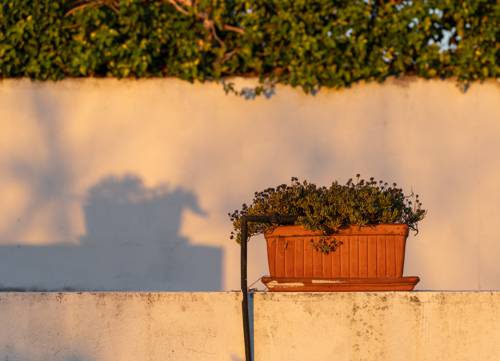
FAQ About Indoor Plant Watering Timers and Schedulers

What are indoor plant watering timers and schedulers?
Indoor plant watering timers and schedulers are devices or systems designed to automate the watering process of indoor plants. They help ensure that plants receive consistent moisture levels by setting specific schedules for watering, which can prevent overwatering or underwatering. These systems can range from simple mechanical timers to advanced smart systems that connect to smartphones and allow remote management.

How do watering timers benefit indoor plants?
Watering timers help maintain consistent moisture levels in soil, which is crucial for the health of indoor plants. They prevent the common problems of overwatering and underwatering by following a set schedule. This is particularly beneficial for busy individuals who may not be able to adhere to a regular watering schedule themselves.

Can watering schedules be customized for different plant types?
Yes, watering schedules can be customized for different plant types. Most advanced watering timers and schedulers allow users to set different irrigation schedules based on the specific water needs of each plant. This feature helps cater to the varying water requirements of plants, from succulents to tropical plants, ensuring each receives the appropriate amount of water.

What are the key features to look for in a watering timer?
When choosing a watering timer for indoor plants, consider features such as ease of programming, battery life, the number of zones it can control, compatibility with mobile devices, and sensors for soil moisture levels. Additional features might include weather-based adjustments and voice control integration with smart home devices.

Are there any disadvantages to using a plant watering timer?
While watering timers offer many advantages, there can be some downsides. Mechanical timers might not account for changes in weather conditions that affect humidity and soil moisture. Automated systems could fail due to battery issues or technical malfunctions. Additionally, they might not be suitable for all plant types, as some plants require more nuanced watering approaches. Regular monitoring is still important to ensure plant health.

Can I use a smart watering system without Wi-Fi?
Yes, you can use a watering system without Wi-Fi, especially if it’s a basic mechanical timer. However, smart watering systems often rely on Wi-Fi for additional features like remote control, alerts, and integration with other smart home devices. Without Wi-Fi, you'll miss out on these advanced features but can still utilize basic scheduling functions.

How do smart watering systems adjust to weather changes?
Smart watering systems can adjust to weather changes through integrated weather data or sensors. These systems receive weather updates and modify their watering schedules accordingly, meaning they will reduce watering when it rains or increase it during dry spells. Some models have sensors that detect soil moisture levels to optimize watering even further.

Do indoor watering timers save water?
Yes, indoor watering timers can help save water by ensuring plants are only watered when necessary, thus avoiding wasteful overwatering. By delivering the right amount of water at the right time, these systems contribute to more efficient water use and can reduce overall water consumption in plant care.

What types of plants benefit most from watering timers?
Most indoor plants can benefit from watering timers, especially those with specific moisture needs or those that are prone to being forgotten due to busy schedules. Plants like orchids, ferns, and tropical varieties often thrive with consistent moisture, making watering timers quite beneficial for them.

Is it easy to install a watering timer for indoor plants?
Installing a watering timer is generally straightforward, especially for simpler models. Most require you to connect the timer to a water source and set the desired schedule. For smart systems, there may be an additional step of connecting them to a mobile app. Instructions are usually user-friendly, but some technical expertise might be needed for more complex setups.

How do I know if my plant is getting the right amount of water?
To ensure your plant is receiving the right amount of water, check the soil moisture manually by feeling it or using a soil moisture meter. The plant's leaves are also good indicators: wilting or yellow leaves can suggest overwatering, while dry and brown edges can indicate underwatering. Adjust your watering schedule based on these observations.

Are there any maintenance requirements for watering timers?
Watering timers require periodic maintenance to function efficiently. This includes checking the battery if it’s battery-operated, ensuring all connections and hoses are secure and free of clogs, and occasionally recalibrating the timer's schedule to accommodate seasonal changes. Regular cleaning and inspection will help prolong the device's lifespan.

Can watering timers be used for outdoor potted plants as well?
Yes, many watering timers designed for indoor use can also be used for outdoor potted plants, provided they are weather-resistant. Using them outdoors can be particularly beneficial during hot summer months when potted plants require consistent hydration.

What is the cost range for indoor plant watering timers?
The cost of indoor plant watering timers varies widely based on features and complexity. Basic mechanical timers can cost as little as $10 to $20, while more sophisticated smart systems with app connectivity and multiple zone controls can range from $50 to $200 or more. Prices depend on the brand, additional features, and build quality.

Can I control a watering timer when I'm not at home?
If you have a smart watering timer with Wi-Fi connectivity and a compatible mobile app, you can control it remotely when you’re away from home. This allows you to adjust schedules, receive notifications, and make real-time changes based on the current condition of your plants or weather changes.

Is an app necessary to operate a smart watering timer?
While many smart watering timers offer app connectivity for enhanced control and features, it's not always necessary to have an app to operate the basic functions of the timer. Most devices allow you to set schedules directly on the unit itself, with the app serving to enhance usability and convenience.

Do watering timers need a power source?
Watering timers typically require a power source, which can be either batteries or a plug-in electrical outlet. Battery-operated models provide more flexibility in placement but require regular battery changes, whereas plug-in models might offer more reliability with continuous power but need to be near an outlet.

How can I integrate a watering system with my existing smart home setup?
To integrate a watering system with your smart home setup, choose a watering timer compatible with platforms like Amazon Alexa, Google Assistant, or Apple HomeKit. This way, you can manage watering schedules through voice commands or create automated routines that incorporate other smart devices, providing seamless control over your indoor gardening activities.

What happens if a watering timer fails?
If a watering timer fails, it's important to identify the reason—whether it's due to power failure, a malfunction, or connectivity issues. Until you resolve the issue, manually monitor and water your plants to prevent them from drying out or being overwatered. Regular testing and maintenance can help prevent failures.

How does one program a basic watering timer?
To program a basic watering timer, first determine the ideal watering frequency and duration for your plants. Then, adjust the timer's settings to match these requirements, usually by setting up specific start times and intervals. Most timers come with easy-to-follow instructions to guide you through the setup process, ensuring your plants receive optimal care.
